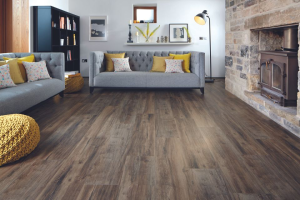Rustic floor designs have become a staple in both country homes and modern interiors. Their natural textures, visible knots, and weathered finishes evoke warmth, character, and timeless charm. Rustic flooring doesn’t try to hide imperfections—it celebrates them. Whether you’re renovating a farmhouse or adding personality to an urban loft, understanding the essential qualities and options of rustic flooring can help you make informed choices for a cozy, grounded atmosphere.

What Defines a Rustic Floor
Rustic floors are characterized by their unrefined and organic appearance. Unlike sleek or glossy finishes, rustic styles focus on grain patterns, irregularities, and natural variations in tone. This aesthetic is meant to highlight the history and raw beauty of the wood or stone used.
Materials Commonly Used
Hardwood is the most common material for rustic floors, with oak, hickory, pine, and maple being popular choices. These woods offer durability and prominent grain patterns. Reclaimed wood is also a top pick, featuring nail holes, aged patinas, and irregular widths. Natural stone like slate or tumbled travertine can also be used for rustic interiors, offering an earthy foundation.
Surface Treatments
Rustic floors often undergo treatments like wire brushing, hand-scraping, or distressing to enhance texture and depth. These techniques create a lived-in appearance and help disguise wear over time, making them ideal for high-traffic areas or families with children and pets.
Design Benefits of Rustic Floors
Beyond looks, rustic floors offer functional benefits that align with everyday living. Their textured surfaces are forgiving of scratches, dents, and dirt, making them low-maintenance over time.
Visual Warmth and Personality
Rustic flooring can anchor a room with warmth and authenticity. The tones range from honeyed ambers to deep browns, working well with neutral or bold color palettes. Each plank tells its own story, giving your space character that can’t be replicated by synthetic materials.
Versatility Across Styles
While typically associated with traditional or rural interiors, rustic floors also work surprisingly well in industrial, Scandinavian, and modern minimalist settings. The contrast between rugged flooring and sleek furniture or clean architectural lines creates visual interest and balance.
Choosing the Right Rustic Floor
To choose the best rustic floor for your project, consider your home’s style, usage patterns, and personal taste. Factors like wood species, plank width, finish, and installation method all affect the final result.
Solid vs Engineered Options
Solid hardwood rustic floors offer longevity and can be refinished multiple times, but they’re susceptible to moisture changes. Engineered wood flooring provides more stability and is suitable for basements or over radiant heat systems. Both can achieve a rustic look when properly treated.
Color and Finish Selection
Matte finishes work best with rustic themes, as they avoid glare and allow the wood’s texture to shine through. Color choices can enhance or tone down the rustic feel. Light-washed floors create an airy rustic charm, while dark-stained options provide a more dramatic, aged effect.
Maintenance and Care
Maintaining a rustic floor doesn’t require perfection. Its organic look naturally hides dust and small flaws. Regular sweeping and occasional damp mopping keep it looking its best. For wood floors, occasional refinishing or oil treatments can extend the life and appearance of the surface.
Protecting Character Over Time
While rustic floors are tough, they still need protection from excessive moisture or direct sunlight. Use rugs in high-traffic areas and felt pads under furniture. These small steps help preserve the texture and prevent deep scratches while maintaining the floor’s unique look.




